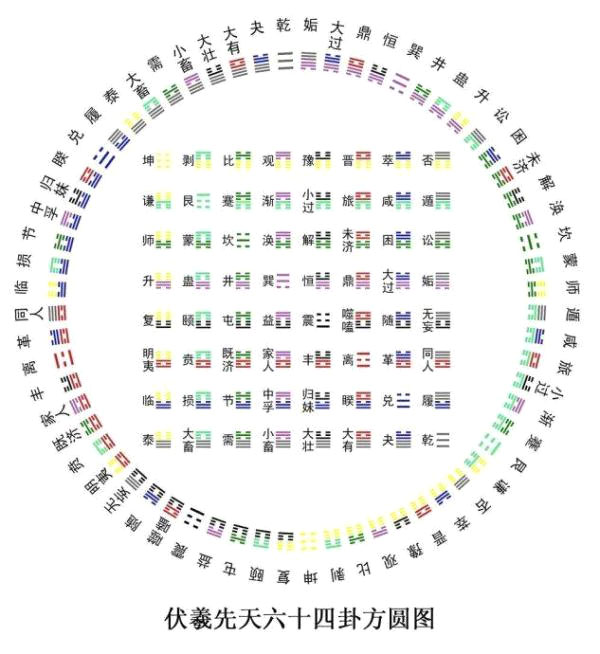I Ching in chinese is Yi Jing易经 also known as the Classic of Changes, Book of Changes and Zhou yi . The 日 part of 易 in Chinese old writing means the sun (yang) and 勿 means the moon (yin) . 经 means rules and regulations. The meaning of the words 易经 or I Ching is about the regulations of changes of universe and nature. I Ching is a reflection of the universe in miniature. The word "I" has three meanings: ease and simplicity, change and transformation and invariability. Thus the three principles underlying I Ching are the following:
1. Simplicity - the root of the substance. The fundamental law underlying everything in the universe is plain and simple, no matter how complex certain things may appear to be.
2. Variability - the use of the substance. Everything in the universe is continually changing. By comprehending this, one may realize the importance of flexibility in life and may thus cultivate the proper attitude for dealing with a multiplicity of diverse situations.
3. Persistency - the essence of the substance. While everything in the universe seems to be changing, among the changing tides there is a persistent principle, a central rule, which does not vary with space and time.
From its mythological origins in prehistory and the earliest dates of recorded history in China, the I Ching has been added to by a succession of philosophers, scholars and rulers. Thus, it reflects a thread of thinking and a common cosmology that have been passed through successive generations. The main contributors to I Ching are Fu xi (伏羲),Wen wang (文王) and Confucius (孔子). Over 5,000 years ago, I Ching originated with Fú Xī who is the humanities ancestor of the Chinese nation. He observed astrology and the Earth, the patterns of birds and animals, the environment and nature which inspired him to invent trigrams (八卦 bā guà) also known as He tu (河图) or Congenital ba gua 八卦). The use of Trigrams was how the Chinese ancient scripts started.


河图He Tu Congenital Ba Gua
By the time of the legendary Yu (禹 Yǔ) 2194 BC- 2149 BC, the trigrams had supposedly been developed into 64 hexagrams (六十四卦).

Fu xi 64 gua
At the time of Shang's last king, King Wen of Zhou is said to have deduced "Acquired Ba Gua"(He tu) from the "Congenital Ba Gua"(Luo shu). He then gave each hexagram a description regarding its own nature, thus Gua Ci ( "Explanation of Hexagrams"). One of his sons, Zhou Gong Dan is said to have created Yao Ci ( "Explanation of Horizontal Lines") to clarify the significance of each horizontal line in each hexagram. It was not until then that the whole context of I Ching was understood and its philosophy heavily influenced the literature and government administration of the Zhou Dynasty (1122 BC-256 BC).

LUO SHU Acquired BA GUA
Later, during the time of Spring and Autumn Period (722 BC-481 BC), Confucius is said to have written the Shi Yi ( "Ten Wings"), a group of commentaries on the I Ching. By the time of Han Wu Di of the Western Han Dynasty (c. 200 BC), Shi Yi was often called Yi Zhuan or "Commentary on the I Ching". Together with the commentaries by Confucius, I Ching is also often referred to as Zhou Yi . All later texts about Zhou Yi were explanations only, due to the classic's deep meaning.。
The text of the I Ching is a set of oracular statements represented by 64 sets of six lines each called hexagrams (卦 guà). Each hexagram is a figure composed of six stacked horizontal lines (爻 yáo), each line is either Yang (an unbroken or solid line), or Yin (broken, an open line with a gap in the centre). With six such lines stacked from bottom to top there are 64 possible combinations and thus 64 hexagrams represented.
I CHING (YI-JING) is one of the most important books in world literature and is the root of Chinese culture. It influenced Confucianism, Taoism, Buddhism, philosophy,astronomy, geography, FENG SHUI,astrology, classical texts and folk culture . I CHING has also had an influence on many other Asia countries such as Japan, South Korea and Vietnam and on Western culture.